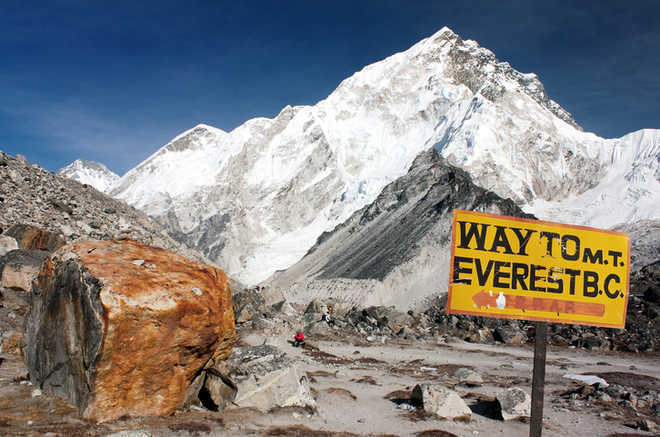Kathmandu, May 24
Three Indian climbers, including two women, died of exhaustion while descending the slopes of Mount Everest, Nepali officials said on Friday, taking to 16 the total of mountaineers killed or missing in this year’s climbing season.
“At least eight Indian climbers are among 16 persons killed on different mountains,” the officials said.
More than 120 climbers scaled the world’s highest mountain on Thursday, but some of them were caught in the crowd of people on the slopes, leading to exhaustion, dehydration and death.
Nihal Ashpak Bagwan, 27, from Pune and Anjali Sharad Kulkarni, 54, from Mumbai, died on the way down from the summit, 8,850 metre (29,035 feet) high.
“Bagwan died of dehydration, exhaustion and tiredness after being caught in the jam of climbers,” said Keshab Paudel of the Peak Promotion hiking agency that handled the climber’s logistics.
Lhakpa Sherpa of another agency said Kulkarni died of weakness while coming down to Camp IV on the South Col of Everest.
Mira Acharya, an official of Nepal’s tourism department, said 49-year-old Kalpana Das from Odisha also died on Thursday during the descent from the peak. Nepal has issued permits to 379 climbers on Mount Everest in the season, which ends this month. Hiking officials say between five and ten climbers die on Mount Everest in an average climbing year.
‘Traffic jam’ occurs when many climbers vie for the summit at the same time, and can be especially dangerous above 8,000 metres known as the ‘death zone’. In a traffic jam, exhausted climbers are often forced to wait for several hours for their turn to ascend or descend on a single rope, increasing chances of exhaustion, frostbite or altitude sickness. Climbers could also run out of oxygen during the final phase of the ascent. — Agencies
Unlock Exclusive Insights with The Tribune Premium
Take your experience further with Premium access.
Thought-provoking Opinions, Expert Analysis, In-depth Insights and other Member Only Benefits
Already a Member? Sign In Now










